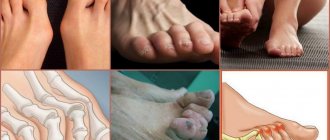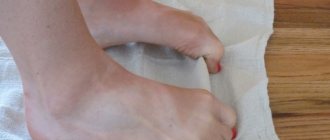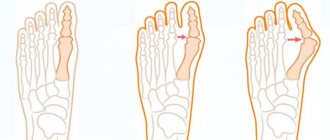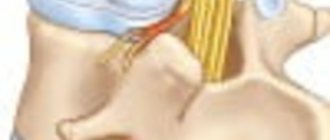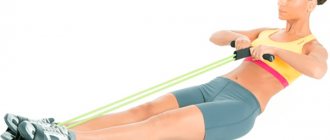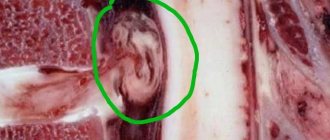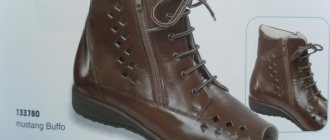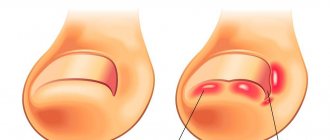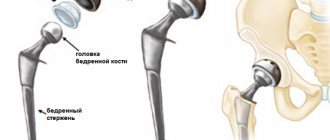All doctors agree: at least half of the success of rehabilitation depends on how correctly the recovery was carried out after surgery to remove hallux valgus. Depending on the method of surgery and the general condition of the patient, rehabilitation may require from 4 months to a year.
The patient is usually discharged the day after surgery. But this does not mean that he is completely healthy and you can start doing your current affairs as usual. Discharge only means that the person does not require constant medical supervision. For the first 10-14 days after hallux valgus surgery, it is better not to do anything. And how complete this “nothing” turns out to be depends on how quickly the swelling goes away and how difficult the rehabilitation will be.
Recovery period
You can get up the next day after surgery to correct hallux valgus, but it is better to do this only to go to the toilet, walking in special orthopedic shoes. It is best to stay in bed as much as possible. The operated leg should be in an elevated position, above the level of the heart. This will help drain blood and lymph from the operated leg and reduce swelling.
Before removing the stitches, the bandage must not be exposed to water under any circumstances. Therefore, during hygienic procedures, the leg should be wrapped in polyethylene, and it is better to limit yourself to local ablutions at this time.
There are two fundamentally different medical approaches to control during this period. Some doctors believe that it is better to play it safe and invite patients for dressings, during which they look at the condition of the wound. Others believe that there is absolutely no need to force a person after surgery to get to the clinic to remove the bandage, look and apply a new one: most often, recovery after valgus surgery does not require intervention.
Advantages of the RAMI clinic in the treatment of Hallux Valgus
The success of treatment depends on the experience of the surgeon and high-quality equipment in the operating room. For patients of the RAMI clinic, the most favorable conditions have been created for the effective treatment of hallux valgus:
- a modern operating unit that meets all medical standards;
- expert class surgical and anesthesia equipment;
- operation support with C-arm X-ray system;
- laboratory within the walls of the clinic, which allows you to obtain research results during the day;
- nine rooms in which the most comfortable conditions for patients’ stay are created - multifunctional beds, a health monitor, disposable clothing, high-quality food, digital TV and Wi-Fi;
- individual rehabilitation;
- personal manager for surgical treatment;
- your own pharmacy, with the ability to place orders for medications;
- service approach to working with patients.
Consultation with an orthopedic traumatologist is the first step to getting rid of the problem. Sign up by phone: +7 (812) 627-13-13.
If you are really looking for your doctor...
When you need to see a doctor and have your wound examined
- The bandage was wet with wound discharge. This shouldn’t happen, and we need to figure out what happened.
- The patient developed a fever, malaise, and chills. These may be signs of an infectious complication, and a doctor's examination is necessary as soon as possible.
- Over time, the patient's condition does not improve. Soreness and malaise immediately after surgery to remove hallux valgus (as after any intervention) is normal. But every next day should be easier than the previous one. If relief does not occur, you need to look for the cause.
Surgical treatment of hallux valgus: indications
It is possible to correct the position of the thumb using conservative methods in childhood, when the bone skeleton is still developing. In all other cases, only surgery will help. The main indications are:
- discomfort when walking due to unbearable pain;
- deviation of the joint by several tens of degrees;
- a significantly protruding bone, making it impossible to wear shoes;
- violation of the position of the foot, making it difficult to move;
- swelling of the thumb;
- inflammatory manifestations and other complications of hallux valgus.
The doctor determines the indications individually for each patient. Typically, surgical methods are used when conservative methods (conventional methods, without surgery) become ineffective.
In 10-14 days
During this period, the sutures are removed, or, if the doctor used absorbable suture material, they disappear on their own. From this moment, you can begin to prevent pathological scarring. To ensure that the seam after surgery is thin, even and invisible, you can use silicone-based patches and gels: Kelo-Kot, Dermatix.
Since prolonged immobility contributes to venous thrombosis and thromboembolism, during this period the doctor may prescribe drugs that reduce blood clotting, such as Aspirin Cardio or Thrombo-Ass. It is better to wear compression stockings on your feet (there are models without socks and toes).
In 4 weeks
By the end of 4 weeks after surgery to correct hallux valgus, a control radiograph is taken. After this, with the doctor’s permission, you can change your orthopedic shoes to regular ones, but they must be comfortable and well-worn in. For now, you need to watch your gait, stepping on an even foot and not rolling over the big toe joint. You should not lean on the outer edge of the foot or “clubfoot” - this increases the load on the 4-5 metatarsal bones and metatarsophalangeal joints, which soon begin to hurt. Be sure to continue the set of recommended exercises. If swelling persists, you need to wear compression garments. Another two weeks will pass like this.
After 7-8 weeks and beyond
Starting from the 7th week after hallux valgus surgery, you can no longer control your gait and move normally, with your foot rolling over the big toe joint.
At the end of the 8th week, X-ray control is recommended - a picture of the once valgus foot under load - and you can then live your normal life. Swelling during this period is normal; it can persist for more than six months, it all depends on the state of the patient’s venous and lymphatic systems.
You can play sports after six months. The load on the upper body can be given earlier - literally a month after the operation, but full-fledged sports involving the legs are possible only with the permission of the doctor and no earlier than 6 months after the operation.
Forms
In normal condition, the metatarsal bones are parallel to each other. Under the influence of certain reasons, the first metatarsal bone deviates outward and because of this, a protruding small bump appears on the foot, ligaments and tendons lose their elasticity, and their dysfunction develops.
The disease goes through several stages:
- Early.
At this stage, the deviation of the big toe is less than 15 degrees.
- Average.
The deviation of the first finger to the side is from 15 to 20 degrees. At the same time, deformation of the second finger is observed. It rises above the thumb and becomes shaped like a hammer.
- Heavy.
The thumb deflection is 30 degrees. All the toes are already deformed, and a large bone growth is observed at the base of the first phalanx. In places where there is a lot of stress on the foot, rough calluses appear.
What shoes to wear after surgery
For the first month after correction surgery for hallux valgus, it is recommended to wear special shoes - Baruk boots. These are shoes with hard soles and thick heels, which allow you to unload the forefoot. You need to wear special boots for a month.
4 weeks after surgery to correct hallux valgus, the doctor allows you to use normal shoes. This doesn't mean you need to immediately put on your favorite dress shoes. By “regular” we mean comfortable shoes with a heel of about 2 centimeters (for example, sneakers), spacious and well-worn in. Many women in this situation temporarily borrow the shoes of male relatives. Moreover, the swelling usually still persists, and the pre-operative shoes become simply too small. After the swelling subsides, you can return to your usual shoes.
Wearing high heels is allowed no earlier than after 4 months, for a short time. But do not forget that narrow high-heeled shoes are considered one of the main causes of hallux valgus.
A set of exercises for the treatment of hallux valgus
The set of exercises for hallux valgus deformity is simple. It is necessary not only and not so much in order to strengthen weakened foot muscles with hallux valgus, but, first of all, to maintain joint mobility. Otherwise, you can get a beautiful, but completely immobile metatarsophalangeal joint of the big toe. Ideally, the exercises should be shown by a qualified physical therapy doctor or rehabilitation specialist, and the first few times they should be monitored for correct execution. But if this is not possible, you will have to do it yourself.
- Sit in a cross-legged position so that the ankle of your operated leg rests on your knee and your big toe can be easily reached with your hands. Grasp it as close to the operated joint as possible. Gently move your finger upward until you feel resistance and pain. Hold it in this position for 10 seconds, release it, allowing it to relax. Repeat 3 times.
- Similarly, holding the thumb as close to the operated joint as possible, tilt it down toward the foot until pain appears. Hold for 10 seconds, release. Repeat 3 times.
- Place a rubber ball with a diameter of 10-15 centimeters on the floor and place your foot on it. Slowly, while rolling over the ball, move your leg forward, try to pull your foot and fingers towards you. Roll back. Repeat 3 times.
This set of exercises for hallux valgus should be repeated 3 times a day for the first 3-4 weeks after surgery. At 5-6 weeks, the frequency of exercises increases to 7-8 per day. From week 7, a weight-bearing exercise is added, which helps strengthen the muscles of the operated foot.
- Stand barefoot on the floor, rise on your toes, try to hold on for 10 seconds (if you don’t succeed, then as long as you can).
The number of repetitions of each exercise increases to 7-8, the complex itself should be repeated 5-6 times a day.
Postoperative physical therapy for hallux valgus helps speed up recovery and reduce swelling. In this regard, lymphatic drainage massage is very useful, which can be started 2 weeks after the intervention. Magnetic therapy, pressotherapy, electrophoresis with agents that normalize vascular tone improve microcirculation and lymph flow.
Diagnostics
Diagnostic measures for deformities of the big toes are carried out by orthopedic traumatologists. If indicated, patients are referred for consultation to rheumatologists. The examination plan consists of the following procedures:
- Survey
. The doctor finds out when the deformity appeared, whether there were other symptoms, and how the disease developed. Examines family and personal history. Identifies factors that could contribute to the development of pathological changes. - Physical examination
. The specialist examines the appearance of the foot, assesses local temperature, joint mobility, the condition of the skin and soft tissues, identifies swelling and inflammation, and checks pulsation in the arteries. - Radiography.
X-rays of the toe and foot show fractures and valgus or varus deviation of the toe. Signs of arthrosis are visualized: narrowing of the joint space, osteophytes, bone deformities, osteosclerosis. With a long course of gout, manifestations of arthritis are visible: osteoporosis, destruction of the epiphyses. - Plantography.
Recommended for identifying and assessing the severity of flat feet, especially in the presence of Hallux valgus. Additionally, podography and podometry can be performed. - Lab tests
. In patients with gout, microcrystals of sodium urate are detected in the synovial fluid, and crystals of uric acid are detected in tophi biopsies. If fibrodysplasia ossificans progressiva is suspected, genetic testing is indicated to detect mutations in the ACVR1 gene.
Orthopedic correction of deformity
Probability of relapse
The likelihood of relapse after surgery depends not only on the intervention technique, but also on how carefully the patient follows the doctor’s recommendations. The characteristics of the body also matter: with general hypermobility of the joints (which is determined by the state of the connective tissue) and a hyperelastic foot with excessively mobile joints, the likelihood of relapses is higher; in these cases, doctors try to use special surgical techniques.
The statistics cited by domestic and foreign authors are contradictory. In adolescents, according to various sources, the relapse rate ranges from 10 to 61%, in adults from 2 to 41%.
Surgery is the only effective way to correct hallux valgus. For it to be successful, you must carefully follow the doctor’s recommendations during the rehabilitation period, do gymnastics and gradually increase the load on the operated leg.
Cost of surgery to remove hallux valgus
The doctor calculates the exact cost of the operation. It is very difficult to name a specific figure - it varies from twenty to eighty thousand rubles. This depends on the type of surgical intervention chosen by the attending physician (in accordance with the stage of the disease and physiological characteristics of the patient), the type of anesthesia, outpatient or inpatient stay, materials and instruments used. To keep the price low, come get rid of hallux valgus in a timely manner, on an outpatient basis, using minimally invasive intervention.
